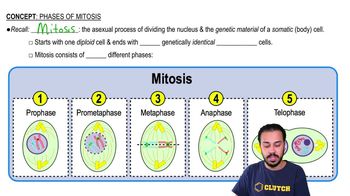The two major components of the dermis are the
(a) Superficial fascia and cutaneous membrane
(b) Epidermis and subcutaneous layer
(c) Papillary layer and reticular layer
(d) Stratum basale and stratum corneum
 Verified step by step guidance
Verified step by step guidance Verified video answer for a similar problem:
Verified video answer for a similar problem:



 1:03m
1:03mMaster Introduction to Cells of the Epidermis with a bite sized video explanation from Bruce Bryan
Start learning